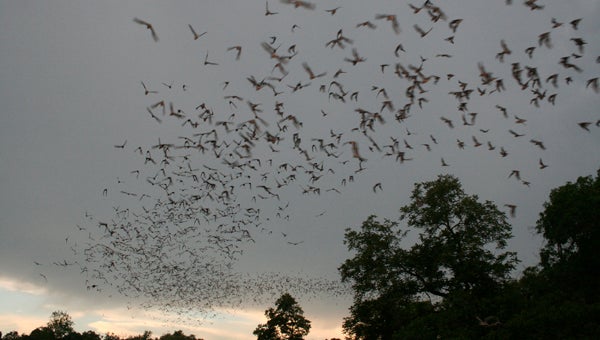Look for bats at dusk in OMSP
Published 2:57 pm Wednesday, November 18, 2015

Alabama is home to about 16 species of bat, including two endangered species, the Gray Bat and the Indiana Bat. (Contributed)
By EMILY D. COOK / Community Columnist
What do you think about when someone says bat? Do you think of the tool used for hitting baseballs or do you think of the only truly flying mammal?
Well, if you think of the mammal – great! If not, let’s try to change that as bats are awesome creatures.
They are often misunderstood because of their size and habit of being out at night.
Bats belong the to Order Chiroptera which is Greek for hand wing, meaning they have turned what would have been their hand into a wing so that they have the ability to fly. How cool is that?
They are capable of flying just like a bird; however, they can’t land on the ground like a bird. They must attach to a high surface, like the roof of a cave or in a tree, hanging upside down, in order to take off flying.
Alabama is home to approximately 16 species of bats, including two endangered species, the Gray Bat and the Indiana Bat.
Bats in Alabama vary in size from 1 inch to 5 3/4 inches with a wingspan from 8 inches to 16 inches and weighing anywhere from 4 grams to 35 grams, depending on species.
The Hoary Bat, Lasiurus cinereus, is the state’s largest bat with a wingspan of about 16 inches and weighing 35 grams (1.25 ounces).
They are very colorful and heavily furred. The most common bat that is likely to be seen in our area is the Tri-colored Bat, Perimyotis subflavus.
During the winter, they may be found hibernating in caves, mines and rock crevices. During the summer, you can find them in caves and also roosting in hollow trees, under tree bark, in brush piles and to a limited extent in buildings.
They may use artificial roosting boxes (bat houses) during the summer.
Bats are beneficial to humans because they can eat hundreds of thousands of insects per year including many species that we consider pests such as mosquitoes, ants, Japanese and June beetles, termites and more.
They also provide pollination for many plants.
Driving through Oak Mountain at dusk is prime time to see bats because they are nocturnal. Come stop by for a visit one day.
Please remember that you keep Alabama State Parks open by visiting them.









